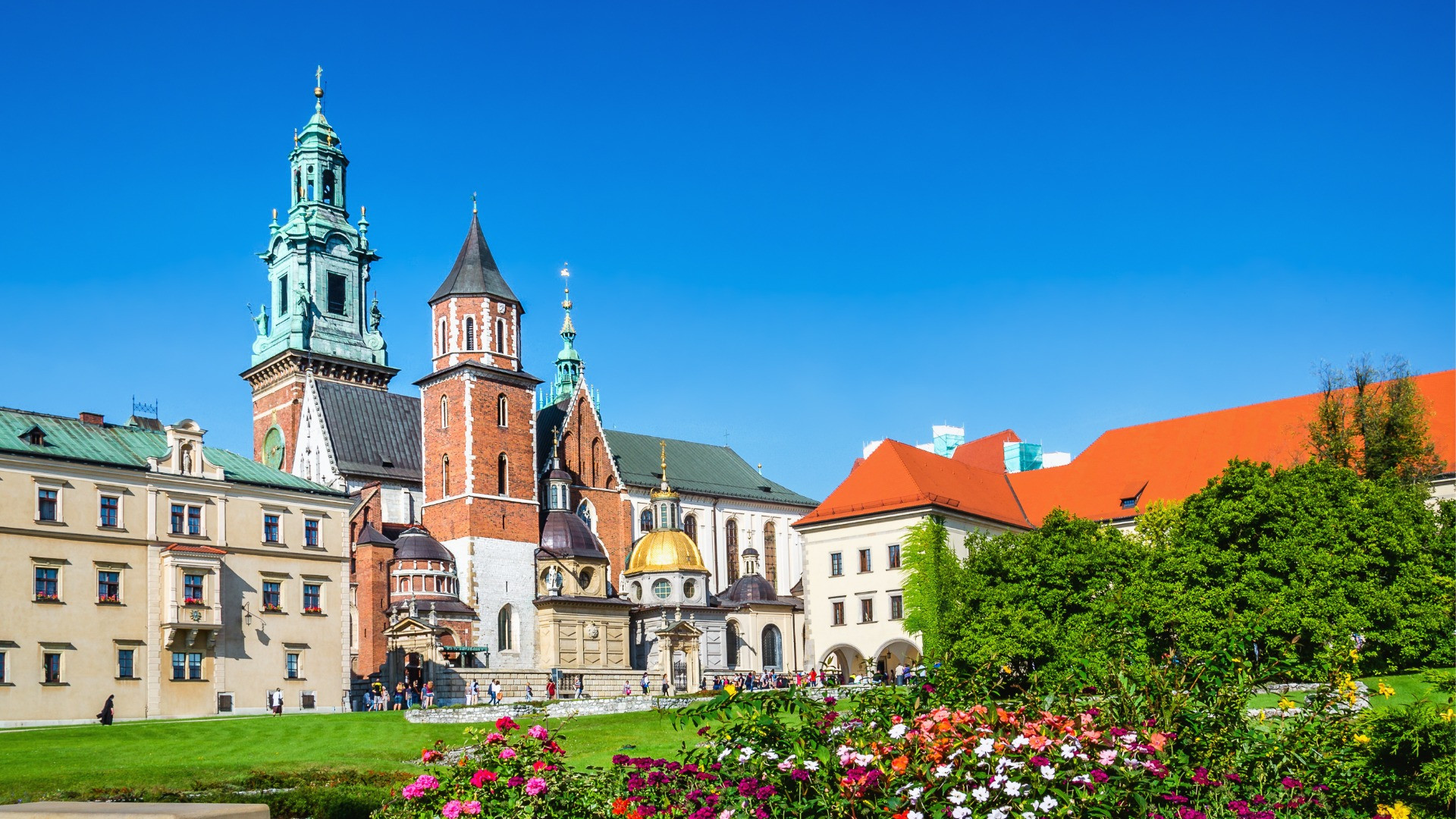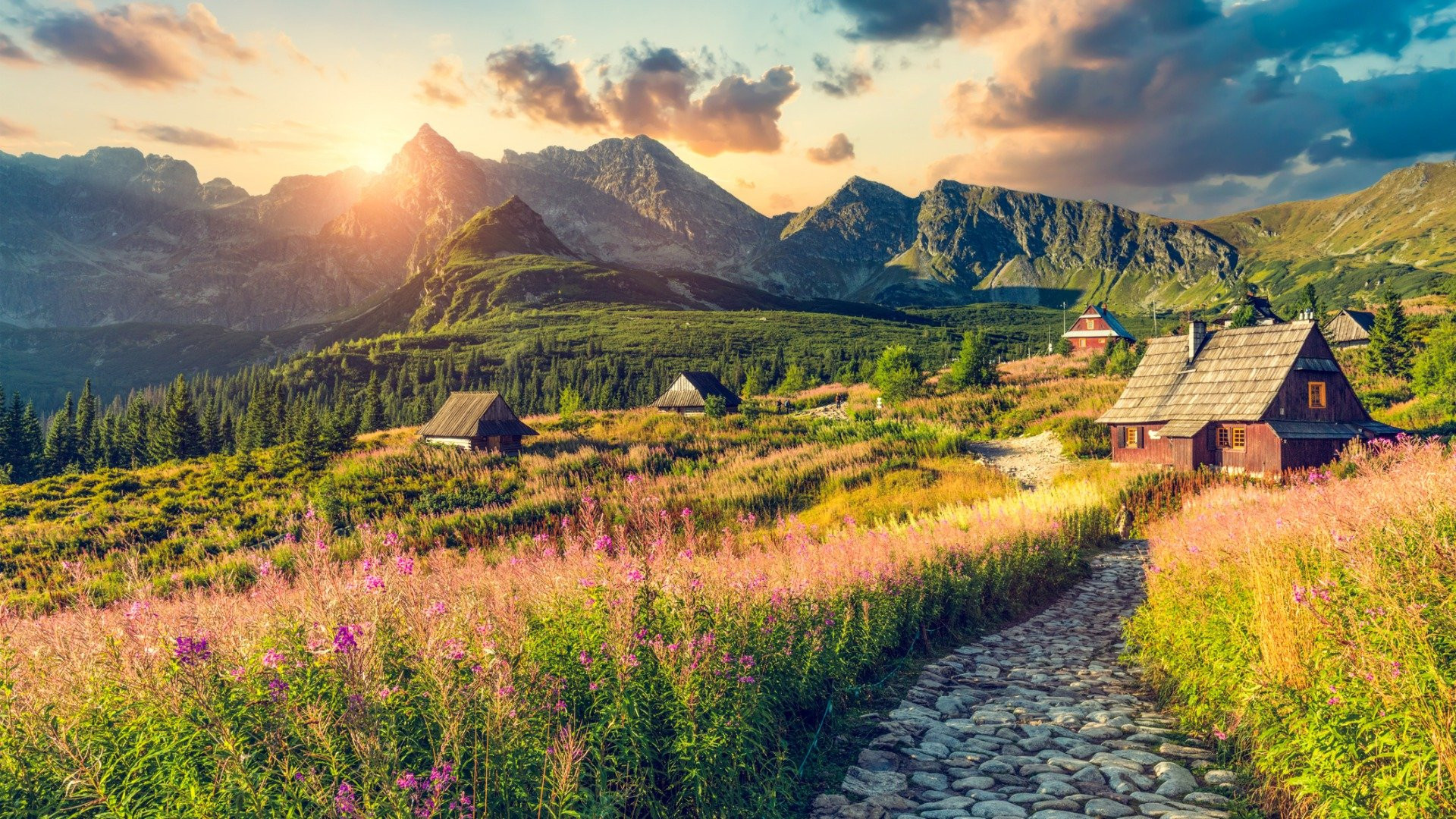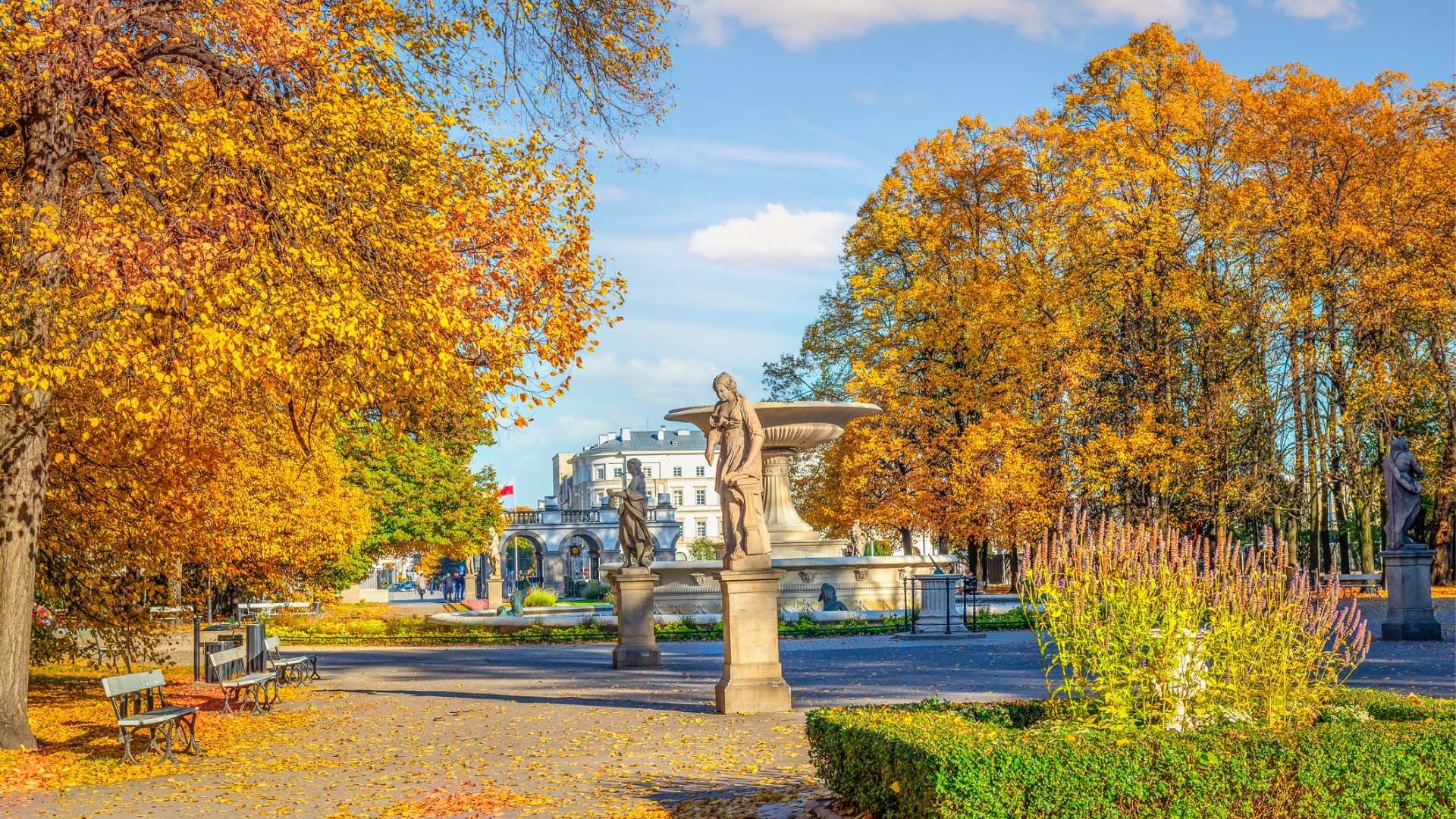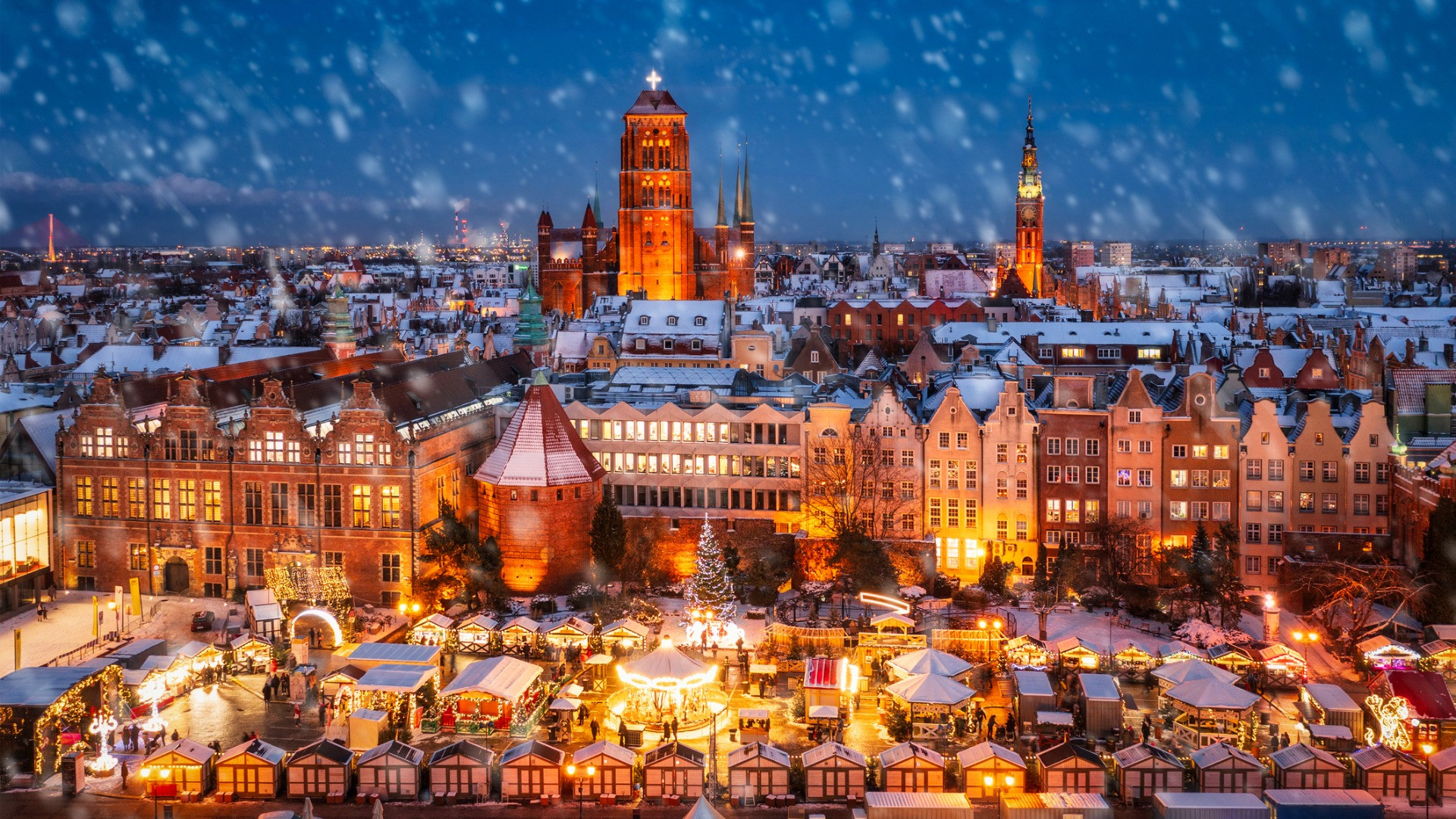Are you planning a trip to Poland and wondering When Is The Best Time To Travel To Poland? SIXT.VN is here to guide you through Poland’s seasons, ensuring you experience the magic of this Central European gem at its finest. Discover the perfect time for your Polish adventure, tailored to your preferences and interests. We offer the best airport transfer services, hotel booking, and tour packages.
1. Understanding Poland’s Diverse Seasons
Poland boasts a temperate climate with four distinct seasons. The north experiences a maritime influence, while the south has a continental climate, leading to varying weather patterns throughout the year. Understanding these nuances will help you pinpoint the ideal time for your visit.
- Spring (March to May): A time of rebirth, with gradually warming temperatures and blooming landscapes.
- Summer (June to August): The peak season, offering warm weather, lively festivals, and long daylight hours.
- Fall (September to November): Known as “Golden Polish Autumn,” featuring mild temperatures and stunning foliage.
- Winter (December to February): A magical time with festive Christmas markets and opportunities for winter sports.
1.1. What kind of weather can I expect from Spring in Poland?
Spring in Poland is a gradual awakening after the winter months. Expect brisk weather initially, transitioning to warmer temperatures in May.
- March: Still quite cold, with average lows around 30°F (-1°C) and highs around 45°F (7°C).
- April: Temperatures become more pleasant, with average lows of 39°F (4°C) and highs of 58°F (14°C).
- May: The weather warms up significantly, with average lows of 47°F (8°C) and highs of 67°F (19°C).
Spring tends to be drier than winter and summer.
1.2. What is it like to visit Poland in the Summer?
Summer is the most popular time to visit Poland, with warm temperatures and long daylight hours creating a vibrant atmosphere.
- June, July, and August: Warmest months. July being the hottest, with an average high around 78°F (26°C) and an average low around 58°F (14°C).
- Pack a light jacket for cooler evenings.
- Summer can be the rainiest time of year, with about eight rainy days per month.
1.3. What should I expect from Fall in Poland?
Fall in Poland, often called “Golden Polish Autumn,” offers mild weather and colorful foliage, creating a picturesque setting for exploration.
- September: The last hints of summer, with an average high of 66°F (19°C) and a low of 48°F (9°C).
- October: Chillier weather arrives, with average highs around 55°F (13°C) and lows around 40°F (4°C).
- November: Colder weather and shorter days, with highs around 44°F (7°C) and lows around 34°F (1°C).
1.4. What is Winter in Poland like?
Winter in Poland is the coldest season, with freezing temperatures and snowfall transforming the country into a winter wonderland.
- December, January, and February: Consistently freezing temperatures, with average lows of 25°F to 30°F (-4°C to -1°C) and highs of 37°F to 40°F (3°C to 4°C).
- Heavy snowfall is common, especially in January and February.
- Days are short, with the sun setting before 3:30 PM around the winter solstice in December.
2. Spring (March – May): Awakening and Rebirth
Spring is a delightful time to explore Poland as the country emerges from its winter slumber. According to the Polish National Tourist Office, spring sees a gradual increase in tourism, with a 15% rise in visitors compared to winter months, as nature awakens and cities come alive (Polish National Tourist Office Data).
 Spring in Krakow
Spring in Krakow
Alt Text: Krakow Old Town in Spring: colorful buildings with blue sky.
2.1. Why visit Poland in the Spring?
- Pleasant Weather: Escape the harsh winter and enjoy gradually warming temperatures.
- Fewer Crowds: Enjoy popular destinations with fewer tourists compared to the summer months.
- Blooming Landscapes: Witness the beauty of blossoming trees and flowers in parks and gardens.
- Cultural Celebrations: Experience unique Polish traditions like the spring solstice and Easter festivities.
2.2. What should I know about Spring Events and Festivals?
- Spring Solstice (March 21): Witness traditional celebrations involving burning straw effigies of Marzanna, the Slavic goddess of winter.
- Easter: Participate in Holy Week festivities, including Palm Sunday processions, Easter basket preparations, and colorful egg painting.
- May Holidays: Enjoy a three-day holiday at the beginning of May, celebrating Labor Day, Flag Day, and Constitution Day.
2.3. Where should I go in Poland during Spring?
- Warsaw: Explore the vibrant capital city with its historical sites and modern attractions.
- Krakow: Discover the medieval charm of Krakow’s Old Town and Wawel Castle.
- Wroclaw: Admire the colorful architecture and charming bridges of this picturesque city.
- Kazimierz Dolny: Escape to this delightful small town known for its art galleries and scenic beauty.
2.4. What should I pack for a Spring trip to Poland?
- Layers of clothing, including a light jacket or coat.
- Comfortable walking shoes.
- An umbrella or raincoat for occasional showers.
3. Summer (June – August): Vibrant and Lively
Summer is the peak tourist season in Poland, offering warm weather, long daylight hours, and a vibrant atmosphere. According to the Central Statistical Office of Poland, summer sees the highest influx of tourists, with a 40% increase in arrivals compared to other seasons (Central Statistical Office of Poland Report).
3.1. Why should I visit Poland in the Summer?
- Warm Weather: Enjoy pleasant temperatures perfect for outdoor activities and sightseeing.
- Long Daylight Hours: Maximize your time exploring with daylight extending until 9 PM.
- Lively Atmosphere: Experience the energy of bustling cities and outdoor events.
- Festivals and Events: Attend numerous cultural festivals, music concerts, and food celebrations.
3.2. What Summer Events and Festivals should I be aware of?
- Krakow’s Pierogi Festival (August): Indulge in Poland’s most famous food at this annual celebration.
- Jagiellonian Fair in Lublin (August): Immerse yourself in folk art and culture at Poland’s largest celebration of its kind.
- Pol’and’Rock Festival and Open’er Festival: Experience the energy of two of Poland’s biggest music festivals.
3.3. What are the best places to visit during the Summer?
- Warsaw and Krakow: Explore these major cities with their historical sites, cultural attractions, and lively nightlife.
- Gdansk: Discover the colorful port city on Poland’s northern coast.
- Sopot and Jelitkowo Beaches: Relax on the sandy shores of the Baltic Coast.
- Zakopane: Hike, mountain bike, and enjoy outdoor adventures in the Tatra Mountains.
 Summer Scenery in Tatra Mountains
Summer Scenery in Tatra Mountains
Alt Text: Breathtaking summer scenery of the Tatra Mountains with cobbled streets.
3.4. What should I pack for a Summer trip to Poland?
- Lightweight clothing.
- Comfortable walking shoes.
- A light jacket for cooler evenings.
- Sunscreen and sunglasses.
- An umbrella or raincoat for occasional showers.
4. Fall (September – November): Golden Polish Autumn
Fall is a scenic time to visit Poland, with mild weather and colorful foliage transforming the landscape. According to TripAdvisor, fall is considered one of the best times to visit Poland, with a 25% increase in positive reviews citing the pleasant weather and beautiful scenery (TripAdvisor Poland Travel Forum).
4.1. Why should I consider visiting Poland during the Fall?
- Mild Weather: Enjoy pleasant temperatures perfect for exploring cities and the countryside.
- Colorful Foliage: Witness the stunning beauty of autumn leaves in parks, forests, and mountains.
- Fewer Crowds: Avoid the peak season crowds and enjoy a more relaxed atmosphere.
- Unique Celebrations: Experience Polish Independence Day and St. Martin’s Day.
4.2. What are some Fall Events and Holidays?
- Polish Independence Day (November 11): Witness a grand parade in Warsaw celebrating Poland’s independence.
- St. Martin’s Day (November 11): Join the festivities in Poznan, famous for its St. Martin’s croissants.
4.3. What are the best Fall destinations in Poland?
- Warsaw, Krakow, Wroclaw, and Poznan: Explore these major cities with their historical sites and cultural attractions.
- Southern Poland’s Castles: Take day trips to picturesque castles surrounded by colorful foliage.
- Bialowieza National Park: Discover the last primeval forest in Europe and spot European bison.
 Fall in Warsaw
Fall in Warsaw
Alt Text: Picturesque Fall foliage in a Warsaw park with statues and benches.
4.4. What should I pack for my Fall trip to Poland?
- Layers of clothing, including a coat and warm clothes.
- Comfortable walking shoes.
- An umbrella or raincoat for occasional showers.
5. Winter (December – February): Festive and Magical
Winter in Poland offers a unique and enchanting experience, with festive Christmas markets and opportunities for winter sports. According to Booking.com, December is a popular month for visiting Poland, with a 30% increase in bookings attributed to the Christmas market season (Booking.com Poland Travel Trends).
5.1. Why visit Poland in the Winter?
- Christmas Markets: Experience the magic of festive markets in cities like Warsaw, Krakow, and Wroclaw.
- Winter Sports: Enjoy skiing and snowboarding in the Tatra Mountains.
- Unique Atmosphere: Discover a cozy and enchanting ambiance in snow-covered cities and towns.
- Fewer Crowds: Enjoy a more relaxed atmosphere compared to the peak summer season (excluding December).
5.2. What should I know about Winter Events and Activities?
- Christmas Markets (December): Explore festive markets with delicious food, beverages, gifts, and souvenirs.
- Skiing and Snowboarding: Hit the slopes in Zakopane and the Tatra Mountains.
5.3. What are the best Winter Destinations?
- Warsaw, Krakow, and Wroclaw: Visit these cities for their fantastic Christmas markets and winter festivities.
- Gdansk and Poznan: Explore these cities during the Christmas season for a unique experience.
- Zakopane: Enjoy winter sports and picturesque scenery in this resort town at the base of the Tatra Mountains.
 Christmas in Gdansk
Christmas in Gdansk
Alt Text: Gdansk’s fairytale-like Christmas panorama, adorned with festive lights and decorations.
5.4. What should I pack for a Winter trip to Poland?
- Lots of warm clothing, including layers, hats, gloves, and scarves.
- Waterproof boots.
- A waterproof parka.
6. Intent of User Search
Here are five potential search intentions for users searching for “when is the best time to travel to Poland”:
- To determine the most favorable weather conditions: Users want to know which months offer the most comfortable temperatures and the least amount of rainfall.
- To find the best time to experience specific events or festivals: Users are interested in attending particular cultural or seasonal events, such as Christmas markets or music festivals.
- To avoid crowds and peak season prices: Users want to travel during the shoulder seasons to enjoy a less crowded and more affordable experience.
- To pursue specific activities, such as skiing or hiking: Users are looking for the best time to engage in outdoor activities like skiing, snowboarding, or hiking in the mountains.
- To discover the best time to see specific sights or attractions: Users want to know when certain attractions, such as national parks or historical sites, are at their most beautiful or accessible.
7. Choosing Your Ideal Time: A Summary Table
| Season | Months | Weather | Advantages | Best For |
|---|---|---|---|---|
| Spring | March – May | Brisk to Mild | Fewer crowds, blooming landscapes, cultural celebrations | City exploration, gardens, Easter traditions |
| Summer | June – August | Warm | Long daylight hours, lively atmosphere, festivals and events | Outdoor activities, beach vacations, cultural events |
| Fall | Sept – Nov | Mild | Colorful foliage, fewer crowds, pleasant temperatures | Scenic drives, castle visits, nature walks |
| Winter | Dec – Feb | Cold & Snowy | Christmas markets, winter sports, unique festive atmosphere | Christmas celebrations, skiing, winter wonderland experiences |
8. Tailoring Your Trip with SIXT.VN
No matter when you choose to visit Poland, SIXT.VN is here to make your trip seamless and unforgettable. We offer a range of services to cater to your needs:
- Airport Transfers: Start your journey stress-free with our reliable and comfortable airport transfer services.
- Hotel Booking: Choose from a wide selection of hotels to suit your budget and preferences.
- Tour Packages: Explore Poland’s highlights with our curated tour packages, designed to immerse you in the local culture and history.
- Customized Itineraries: Let our experts create a personalized itinerary based on your interests and travel style.
Address: 260 Cau Giay, Hanoi, Vietnam
Hotline/Whatsapp: +84 986 244 358
Website: SIXT.VN
9. Poland Travel FAQs
9.1. Is Poland safe for tourists?
Yes, Poland is generally a safe country for tourists. According to the Global Peace Index, Poland ranks highly in terms of safety and security (Global Peace Index).
9.2. What is the currency in Poland?
The currency in Poland is the Polish Złoty (PLN).
9.3. Do I need a visa to enter Poland?
Visa requirements depend on your nationality. Check the Polish Ministry of Foreign Affairs website for the latest information (Polish Ministry of Foreign Affairs).
9.4. What language is spoken in Poland?
The official language of Poland is Polish. However, English is widely spoken in tourist areas.
9.5. What are some must-try Polish foods?
Some must-try Polish foods include pierogi, kielbasa, żurek (sour rye soup), and bigos (hunter’s stew).
9.6. How do I get around in Poland?
Poland has a well-developed transportation system, including trains, buses, and trams. Renting a car is also a good option for exploring the countryside.
9.7. What are some popular souvenirs to buy in Poland?
Popular souvenirs include amber jewelry, wooden handicrafts, and Polish pottery.
9.8. What is the best way to experience Polish culture?
Attend local festivals, visit museums and historical sites, try traditional Polish cuisine, and interact with locals.
9.9. Are credit cards widely accepted in Poland?
Credit cards are widely accepted in major cities and tourist areas. However, it’s always a good idea to carry some cash for smaller establishments and rural areas.
9.10. What is the tipping etiquette in Poland?
Tipping is customary in Poland, typically around 10-15% for good service in restaurants and cafes.
10. Ready to Embark on Your Polish Adventure?
Don’t let the planning overwhelm you! Let SIXT.VN take care of all the details, so you can focus on creating lasting memories in Poland. Whether you dream of strolling through Christmas markets, hiking in the Tatra Mountains, or exploring historical cities, we have the perfect services for you. Contact us today to start planning your dream Polish getaway!



